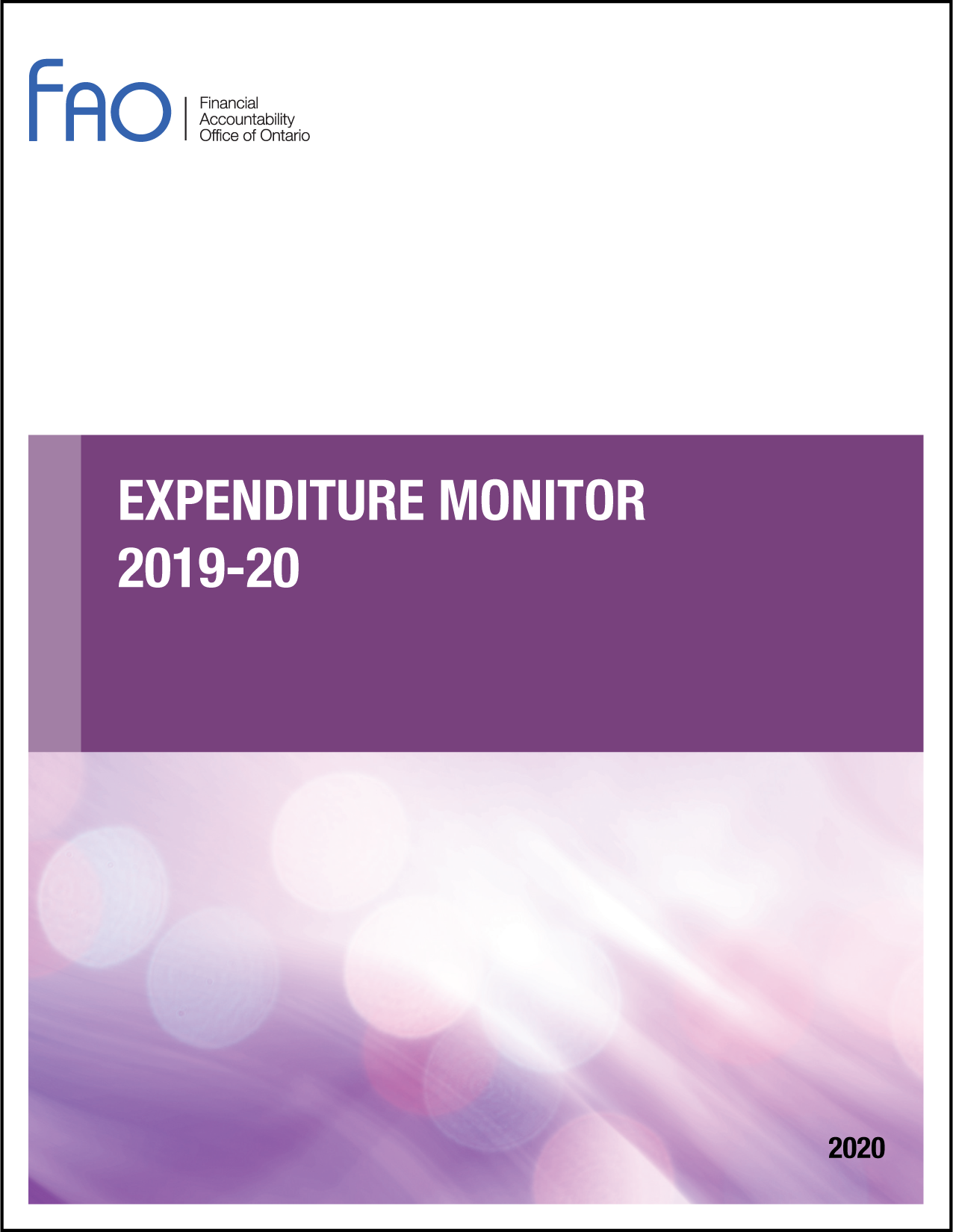Expenditure Monitor 2019-20: Q3

This report provides information on spending by the Province over the first nine months of the 2019-20 fiscal year (as of December 31, 2019), including changes to the 2019 budget spending plan, actual spending results compared to planned spending and an updated budget deficit projection.
Expenditure Monitor 2019-20: Q3, Financial Accountability Office of Ontario, 2020.

